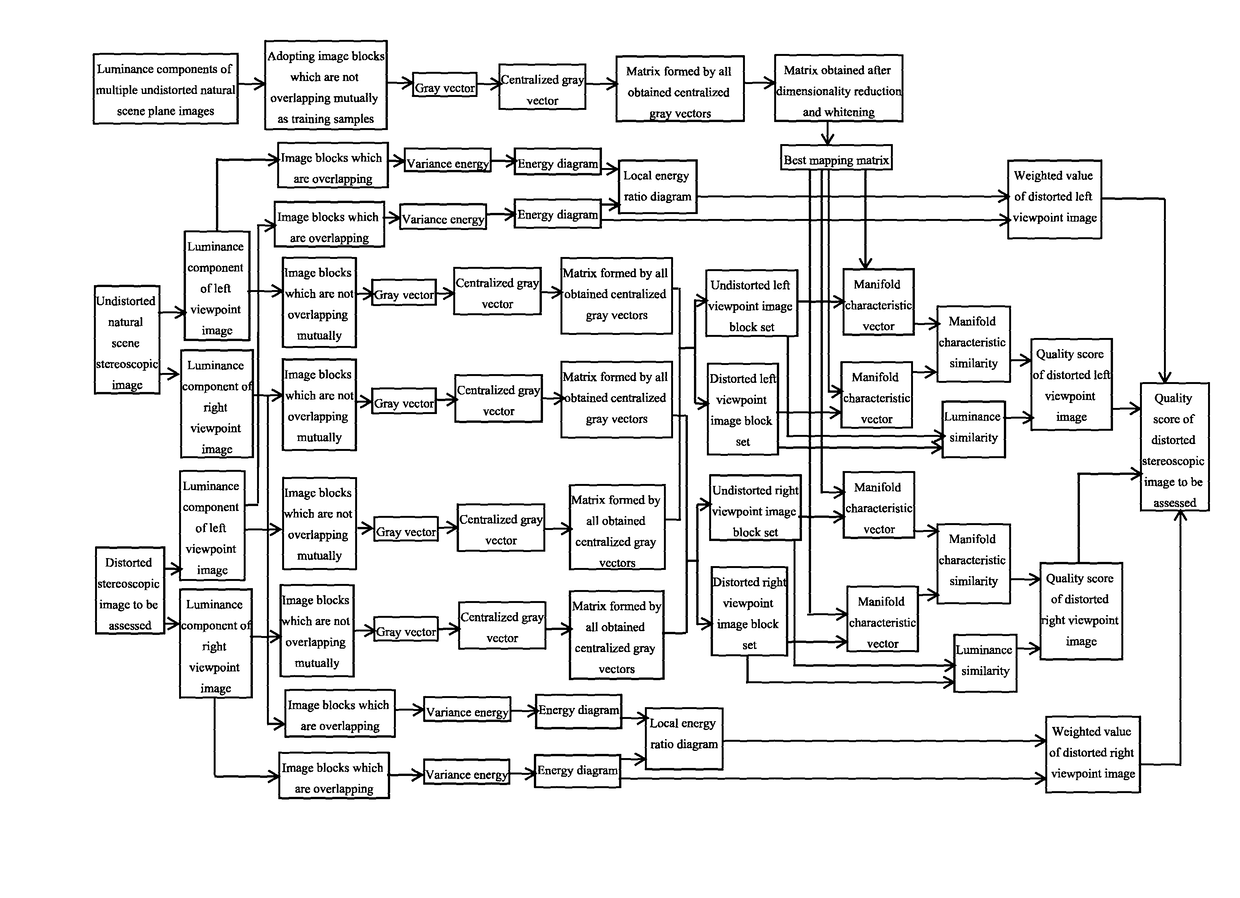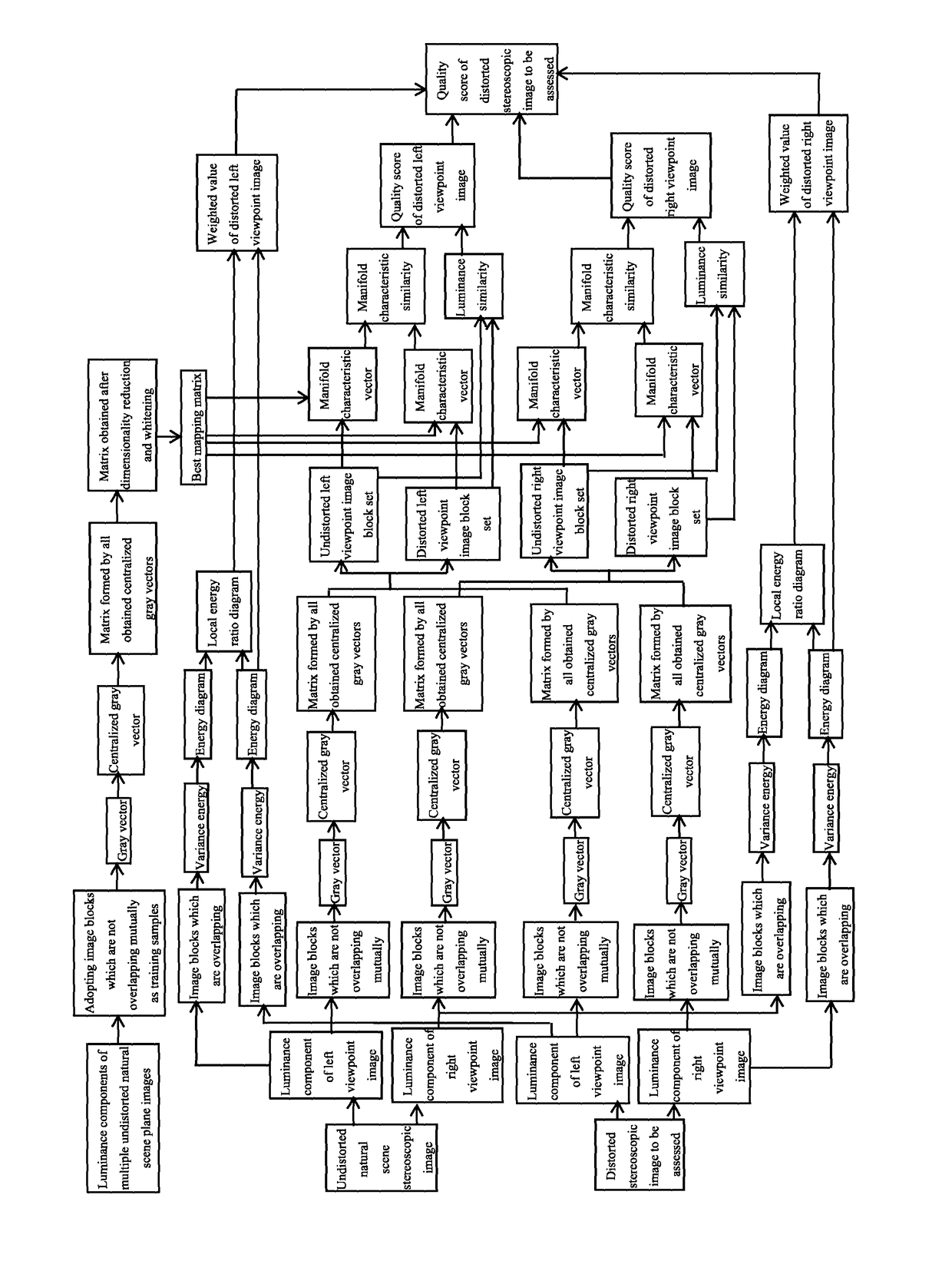Objective assessment method for stereoscopic image quality combined with manifold characteristics and binocular characteristics
a stereoscopic image and binocular characteristic technology, applied in image enhancement, image analysis, instruments, etc., can solve the problems of affecting the assessment performance, need to be considered, and difficult quantitative assessment of stereoscopic image quality, and achieve high consistency.
- Summary
- Abstract
- Description
- Claims
- Application Information
AI Technical Summary
Benefits of technology
Problems solved by technology
Method used
Image
Examples
Embodiment Construction
[0093]The present invention is further illustrated with an accompanying drawing and a preferred embodiment in detail.
[0094]An excellent image quality assessment method is able to well reflect visual perception characteristics of human eyes. For a visual perception phenomenon, some researches indicate that: a manifold is a basis of perception; human perception is based on perceiving the manifold and a topological continuity, namely the human perception is limited on a low-dimensional manifold; a human brain perceives objects in a manifold manner; and, a neuronal group activity in the human brain is generally described as a result of a neural discharge rate set and thus is able to be represented as a point in an abstract space having a dimensionality equal to a neuron number. The researches indicate that a discharge rate of each neuron in a neuronal group is able to be represented by a smooth function having a few variables, which illustrates the neuronal group activity is limited on ...
PUM
 Login to View More
Login to View More Abstract
Description
Claims
Application Information
 Login to View More
Login to View More - R&D
- Intellectual Property
- Life Sciences
- Materials
- Tech Scout
- Unparalleled Data Quality
- Higher Quality Content
- 60% Fewer Hallucinations
Browse by: Latest US Patents, China's latest patents, Technical Efficacy Thesaurus, Application Domain, Technology Topic, Popular Technical Reports.
© 2025 PatSnap. All rights reserved.Legal|Privacy policy|Modern Slavery Act Transparency Statement|Sitemap|About US| Contact US: help@patsnap.com



